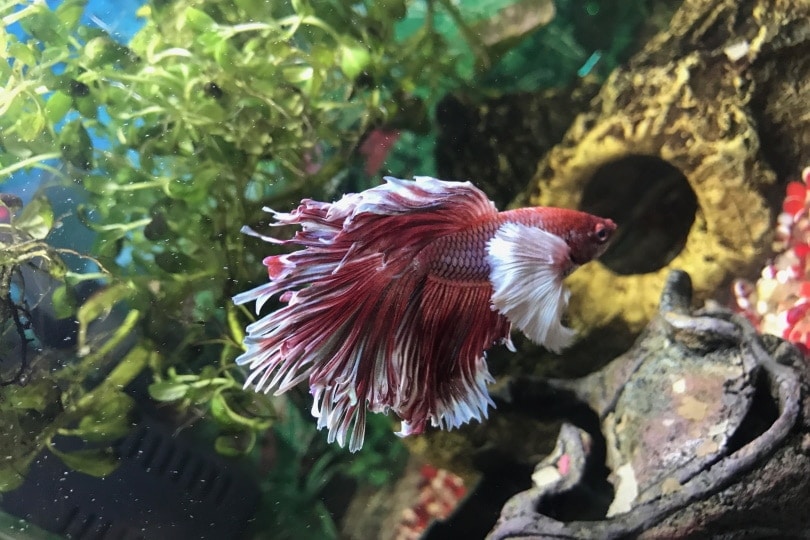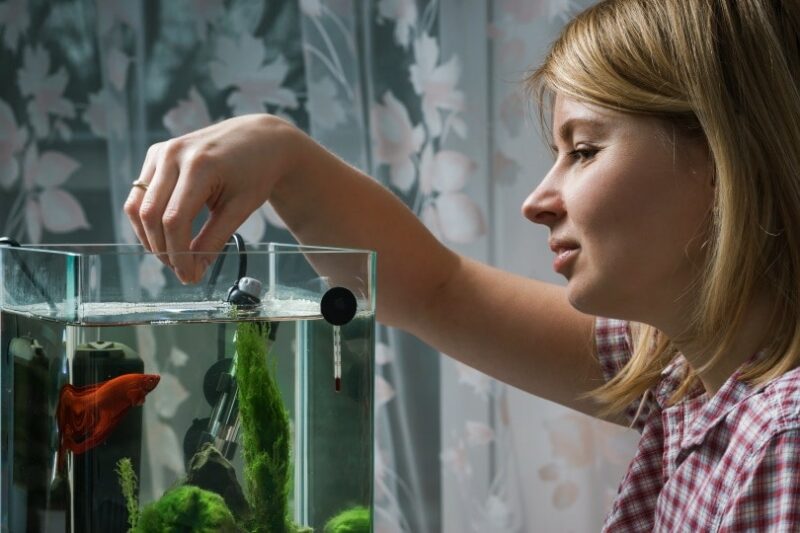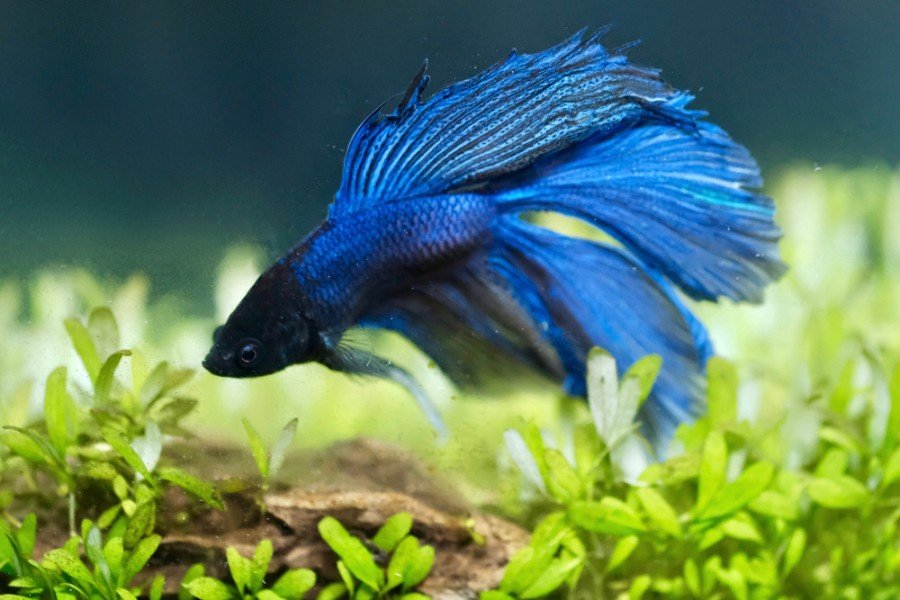Ammonia Poisoning in Betta Fish: Treatment & Future Prevention
Updated on
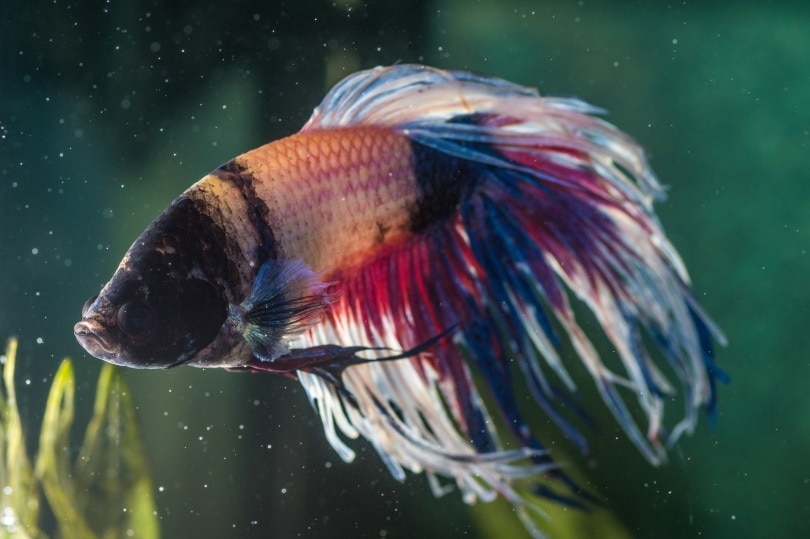
If you’re new to fish keeping, then you may not be familiar with the nitrogen cycle and the necessity for cycling a new aquarium. If you’re an experienced fish keeper, then you likely know what to look for in tracking your water quality. Fish keepers of any level should be familiar with the waste products that can build up in an aquarium that isn’t properly filtered or maintained.
The most common source of toxicity related to new tanks is ammonia poisoning. Betta fish aren’t particularly heavy bioload producers, so it may take time for ammonia to begin building up in your Betta’s tank. The size of your tank, your cleaning and maintenance schedule, and the number of animals in the tank can all play into how quickly or slowly ammonia begins building up in the tank.
Here are the things you need to know about ammonia, ammonia poisoning, and preventing problems from ammonia.
What is Ammonia?
Ammonia is produced by the liver and is a waste product of protein catabolism, which is the process of proteins being broken down into smaller and smaller particles until they have been broken down into amino acids. Protein catabolism is a type of metabolic process and is necessary for life.
Ammonia is a byproduct of the protein catabolism process, but it is toxic and has to be excreted by the body to prevent damage to the internal organs, especially the brain. Ammonia is excreted from your Betta fish’s body via the gills, and then it enters the tank water.
In a fully cycled tank, nitrifying bacteria consume ammonia, eventually converting it to its less toxic form, nitrate. In a tank that isn’t fully cycled or that has a crashed cycle, then the nitrifying bacteria are not fully established and aren’t removing ammonia from the water.
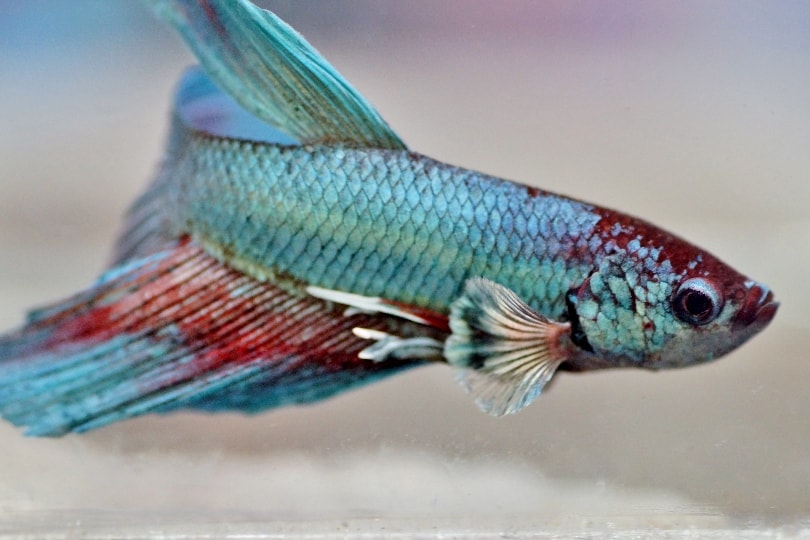
How Can I Check My Tank for Ammonia?
To cycle a tank, you have to have a source of ammonia. That source can be ammonium chloride or a fish or invertebrate that is excreting waste into the tank. Do not add ammonia to a tank that has animals in it.
To monitor your tank cycle, you’ll need to check your tank’s ammonia levels daily. You have multiple options for checking ammonia levels, but just know that you have to have some type of test kit to monitor your ammonia levels and tank cycle. You cannot monitor your tank’s cycle through any type of visual means.
Liquid Test Kit
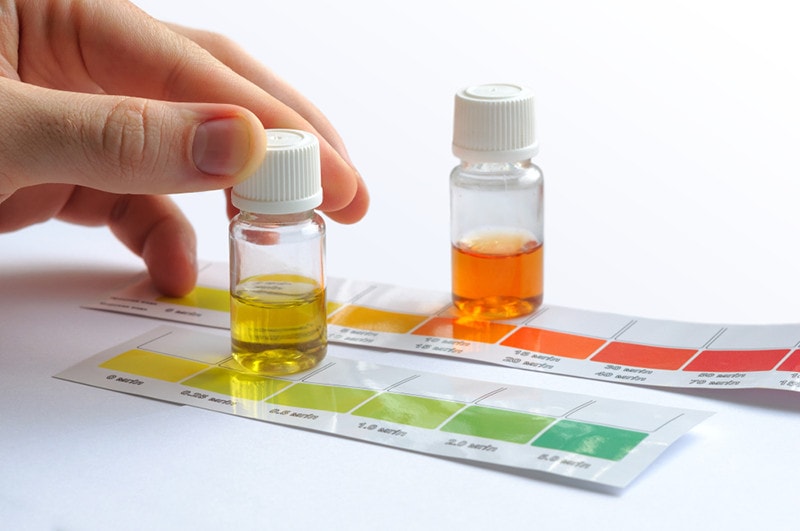
The most reliable way to check ammonia is to use a liquid test kit, like the API ammonia test kit, which is also part of the API Master Freshwater Test Kit. You can also use test strips, like the Tetra EasyStrips Ammonia Test Strips, but strips do tend to be less reliable than liquid tests.
Also, be aware that most test strips don’t check ammonia levels, so you’ll have to ensure you choose strips that do. An ammonia monitor that stays inside your tank, like the Seachem Ammonia Alert, is a great way to monitor the most toxic form of ammonia circulating in your tank.
If you don’t have an ammonia test of some sort on hand, you need to get one. You should have tests available to monitor your water parameters at all times. If you feel like you’re not getting accurate test results from the tests you have at home, you can take a sample of your water to most big box pet stores or local aquatics stores. These places will usually test your water for free.
What are the Symptoms of Ammonia Poisoning?
There are multiple ways to recognize ammonia poisoning in your Betta fish. However, many of the symptoms are shared with other water quality problems and illnesses, so it’s imperative that you check your water parameters first if you see your Betta exhibiting any of these symptoms.
Gasping for Air
Although Bettas are often seen at the top of the water and may breathe air, your Betta shouldn’t spend a significant amount of time attempting to breathe air. If you see your Betta fish gasping for air at the surface or breathing more rapidly than normal, then you should be concerned about this.
You may also note redness along the gills, especially the inner membrane of the gills. Any other delicate parts of the body, like the anal opening or the eyes, may also show redness and irritation.
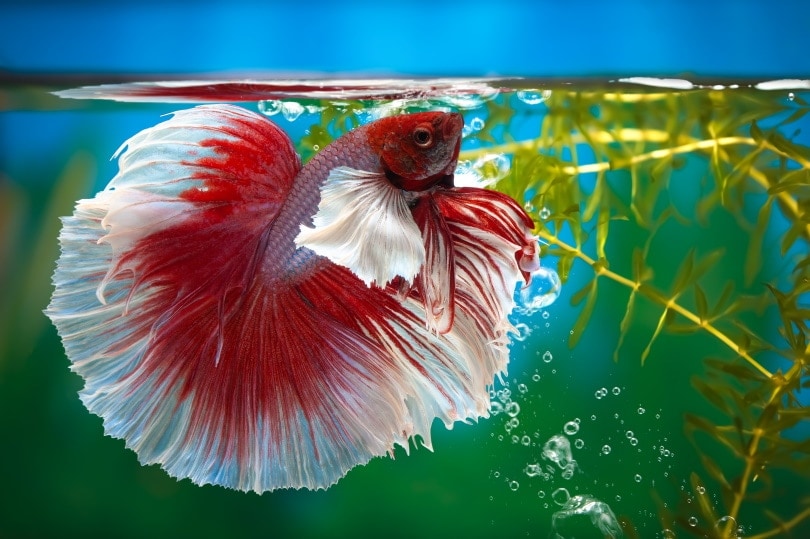
Red Streaks
Red streaks along the body or fins are also indicative of ammonia poisoning. With extreme or long-term ammonia poisoning, you may begin to see your Bettas fins rotting. They will usually not take on the white edges as you might see with a fungal infection. You may see jagged edges, but the fins will often rot off in a somewhat stringy fashion.
Clamped Fins
Inappetence and clamped fins can be symptoms of ammonia poisoning. However, they can be symptoms of dozens of other problems, so look for other symptoms and check your water parameters. You may also notice lethargy and either bottom sitting or air gulping and staying at the surface.
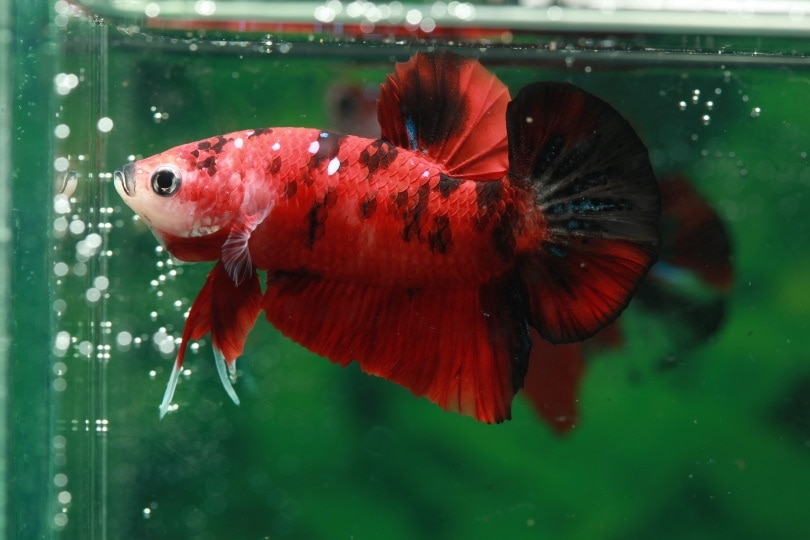
Black Patches
You will see people claim that the appearance of black patches is indicative of ammonia poisoning, and this is partially correct. Black patches often indicate healing of a wound, and they may or may not be present on a Betta fish.
If your Betta has had long-term ammonia exposure to the point that their body is beginning to attempt to heal the injuries caused by the ammonia, then you may see black patches or areas develop.
Treating Ammonia Poisoning
If your ammonia level is high, a partial water change is a good idea to make the environment safer for your Betta while you get the ammonia problem under control. Ensure your tank has proper filtration, which can be a sponge filter, internal filter, or HOB filter.
Ammonia reducing products, like Seachem Prime, can help rapidly reduce the ammonia level in the water. This will not be a long-term solution for the ammonia, though. Adding beneficial bacteria directly to the tank can help initiate bacteria colonization.
You have to create a hospitable environment in the tank for nitrifying bacteria to colonize. Frequently changing out your filter media and cartridges removes a chunk of beneficial bacteria every time you do it.
It’s a good idea to replace your filter cartridges that are made to be frequently replaced with bio foam and ceramic filter media. These products are made to last and create a fantastic environment for nitrifying bacteria. Also, nitrifying bacteria require oxygen and water flow to survive, which makes filters an excellent place for them to colonize.
Adding products to the water that help protect and stimulate production of your Betta’s slime coat are a good way to help your Betta begin to heal from ammonia poisoning. You can add these products directly into the tank or use them as a daily bath for your Betta fish in another container.
Be aware that some of these products may begin to stain the silicone in your tank and items like plastic airline tubing. They usually have a blue coloration in the product that does stain items with regular use.
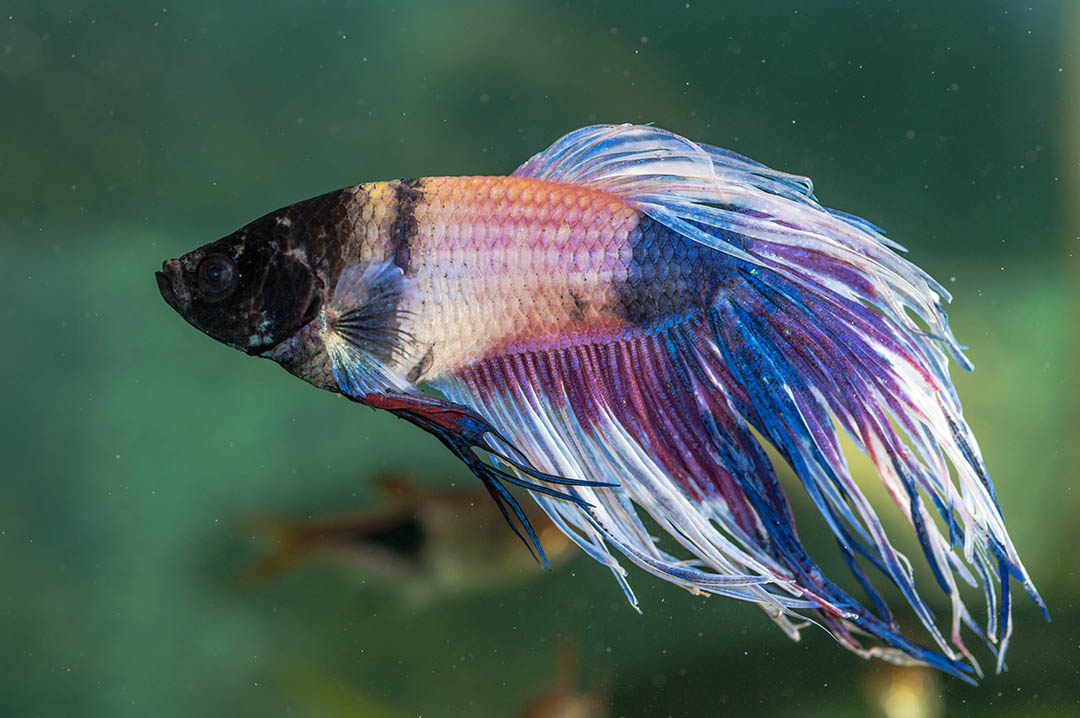
Preventing Ammonia Poisoning
To prevent ammonia poisoning, you have to establish and maintain the nitrifying bacteria colonies in the tank. If the tank water is stagnant or if you are regularly changing out the filter media or scrubbing tank décor, then bacteria will not be able to colonize.
Nitrifying bacteria do not live in the water column. They colonize on surfaces in the tank, like the substrate, décor, filter media, and any surface with water flow.
- Regularly check your ammonia levels.
- It’s a good idea to do it either with every water change or weekly, whichever is more frequent for you.
- Also, only use antibiotics when absolutely necessary. Antibiotics kill bacteria, including good bacteria. Using antibiotics in your tank can wipe out your nitrifying bacteria colonies.
Final Thoughts
The best treatment for ammonia poisoning is preventing it in the first place. Sometimes, your fish will be very sick and uncomfortable before it begins showing symptoms of ammonia poisoning. Maintaining the nitrifying bacteria colonies in your tank are your best prevention of ammonia poisoning. Regular checks of ammonia levels will help you monitor your tank cycle, which is important even after cycling is complete since filter media changes, tank cleaning, and some medication use can all lead to a cycle crash.
Featured Image Credit: Wirestock Creators, Shutterstock

